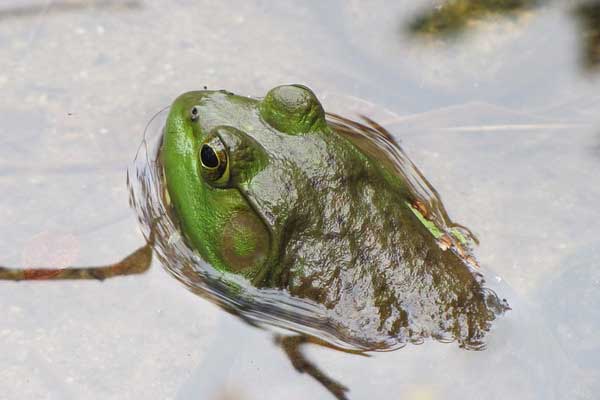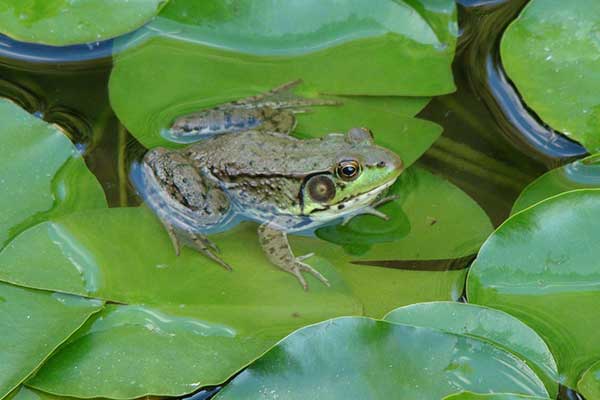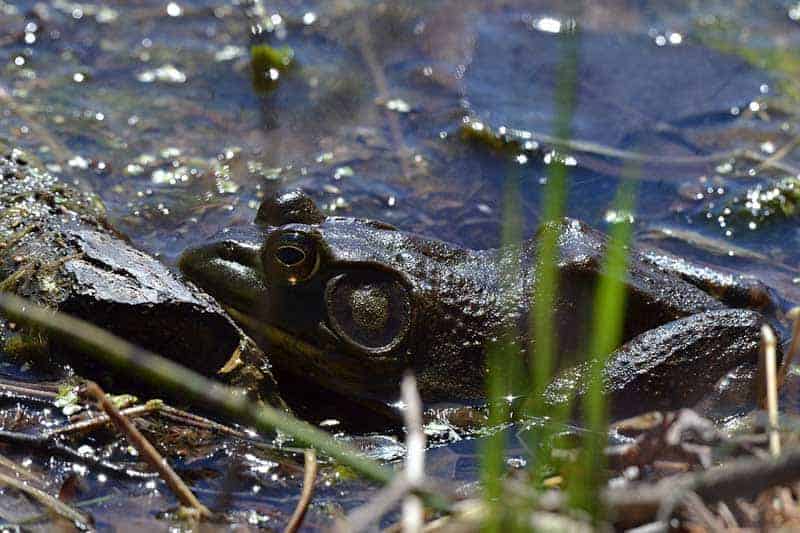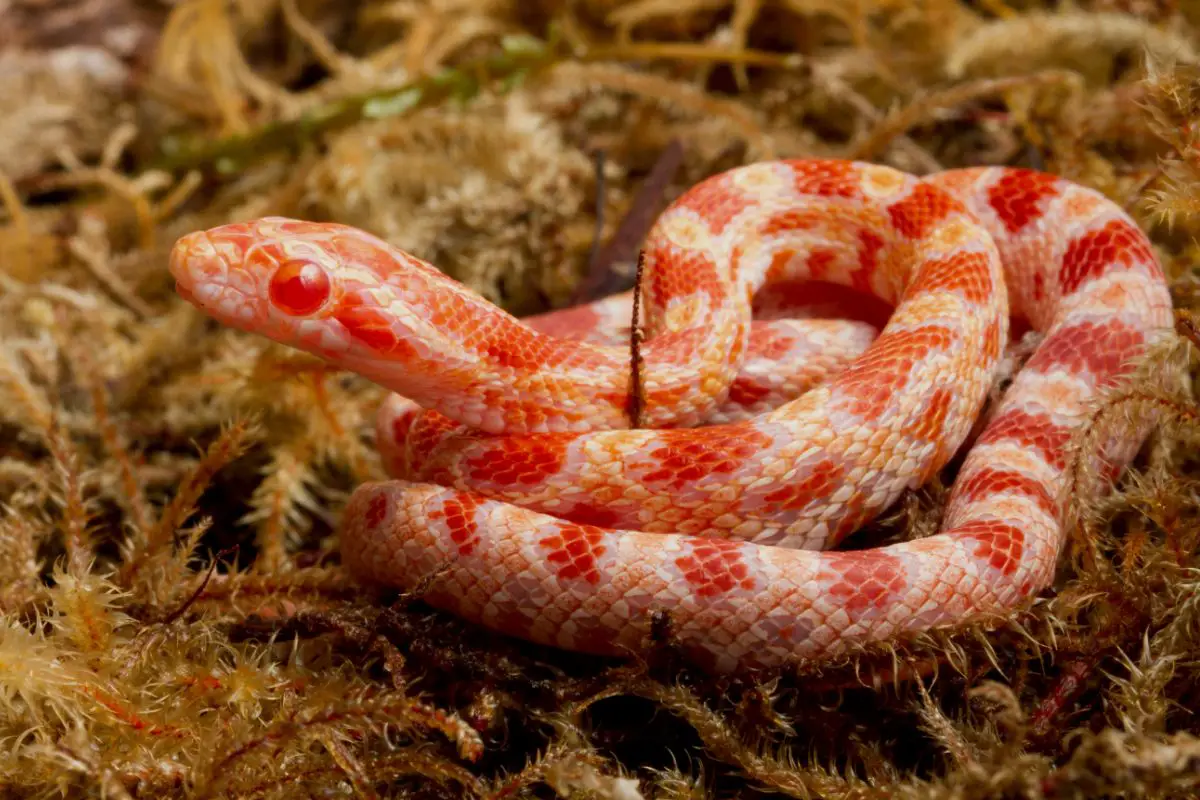Bullfrogs are the largest species of true frogs in the United States. They can be found throughout the lower 48 states, including Texas. In fact, one of the largest bullfrogs is claimed to be caught in Texas.
These frogs are from the family Ranidae and are semi-aquatic and prefer living near slow-moving streams. With Texas having various rivers and streams, including the Rio Grande, Pecos River, San Antonio River, and Colorado River. The state provides an optimal habitat for bullfrogs that often travel on land during wet seasons to colonize new waters.
In this article, I’ve put together detailed information on the one existing bullfrog species in Texas.
About the bullfrogs in Texas
The only species of bullfrog in Texas is the American bullfrog. Read on to learn more about this species!
American bullfrog
Scientific name: Rana catesbeiana
The American bullfrog gets its name from the very loud, deep, bellowing call it makes that sounds like the mooing of a cow. You can hear them call day or night, typically during late spring and summer for mating season.
Range and habitat
You can find American bullfrogs throughout Texas, except for mountainous areas. They most commonly exist in the eastern regions of the state, living near large permanent water bodies with vegetative shorelines. They spend most of their time in the water, where they feed and breed. However, if the conditions are wet enough, you can find them traveling across land in search of new water bodies to inhabit.

Physical characteristics
These frogs are typically olive green or greenish-brown. Their backs and sides can be plain, lightly shaded, darker shades, or have mottling or grayish-brown spots. Their underbellies are generally off-white with yellow or gray blotches. You can see the contrast in its color between the upper lip and pale lower lip.
They have almond-shaped pupils and brown irises that are prominent on their heads. These frogs have short, sturdy forelegs without webbed toes and long hind legs. Their back toes have webbing, except for the fourth toe. The webbing on their feet assists them in swimming faster, since bull-frogs prefer being in or around water.
American bullfrogs average between 3.6 to 6 inches in length and average 1.1 pounds in weight. However, there are records of a frog growing up to 8 inches and weighing 1.8 pounds.
Diet
Bullfrogs have small teeth useful for grasping prey. They are carnivores and will eat anything they can fit in their mouths, including fish, spiders, other frogs, birds, and small mammals. Common Texas species that are part of their diet include:
- Diving beetle
- Mosquito fish
- Ducklings
- Crayfish
- Waterstrider
Reproduction
Although American bullfrogs prefer living alone, they will gather from late May into July to mate. The males will find good sites to lay eggs and defend them while attracting females by bellowing out loudly. Although their names are influenced by this deep bellow, females actually don’t call.
Each breeding season, this species lays up to 20,000 eggs. The eggs hatch after 4 or 5 days as tadpoles. The tadpoles remain in the water up until August or September of the following year before metamorphosing. American bullfrogs generally grow faster in the first eight months.

Hunting and collecting regulations
You can hunt bullfrogs in Texas, and people often do to gather frog legs as food. They are considered a nongame species with no limits to the seasons you can hunt them or the size you capture. You are, however, limited to a total of 25 frogs and will need a valid hunting license. If you are a school teacher and want to capture frogs for educational purposes, you can obtain an Educational Permit that exempts you from the quantitative limits.
While you can hunt bullfrogs anytime on private land, there may be restrictions on public land. When hunting on public lands at night, the Texas Parks and Wildlife Department also recommends you contact your local game warden as a courtesy. Additionally, collecting or hunting bullfrogs on public roads is not allowed.
FAQs about American bullfrogs
1. Do bullfrogs bite?
Yes, an American bullfrog can bite you in defense. However, with their tiny teeth, you are less likely to feel much pain.
2. Are American bullfrogs poisonous?
Yes. Like many frogs, they have parotid glands behind their ears that secrete poison to protect themselves. They also have toxic skin that prevents other animals from eating them. However, their toxins are not life-threatening to humans. You will be safe as long as you don’t touch your face and, instead, wash your hands with antibacterial soap after handling them.
Also, be mindful when you handle them since bullfrogs have sensitive skin. Chemicals on your hands, such as in lotion or fragrant soaps, can potentially harm them.
3. Do they carry diseases?
Yes, these bullfrogs can carry a fungal infection on their bodies called chytridiomycosis. This disease is more deadly for the frog itself and generally doesn’t impact humans unless you have an adverse reaction to it. However, humans can spread this fungal infection. This is another reason to wash your hands after handling them!

4. Do bullfrogs make good pets?
If kept alone in an enclosure, the American bullfrog can be a gentle enough pet. However, they might become aggressive if you keep more than one together. These frogs can easily get nervous and jump very long distances, so they aren’t considered the easiest to care for and are not recommended for beginner owners.
5. How far can bullfrogs leap?
Adult American bullfrogs can leap around 3 feet. However, they are known to jump a distance of 6 feet easily. That’s 10 times their body length!
6. How long do they live?
In the wild, American bullfrogs can live around 8 to 10 years. However, one captive bullfrog lived almost 16 years.
7. Are American bullfrogs an invasive species?
Technically, yes. The American bullfrog is native to eastern U.S. states and considered invasive in western states. These frogs are known to be plentiful, produce in large numbers, and have large appetites, including eating other native species. They are sometimes a nuisance to humans when they make homes in artificial water features such as koi ponds. You can also legally hunt them for frog legs in Texas.


